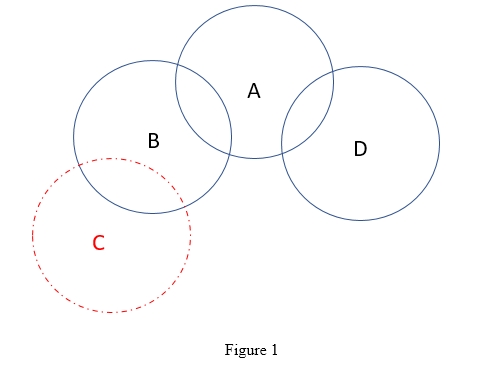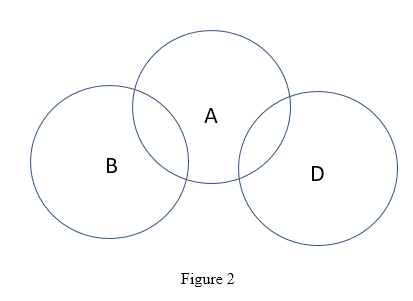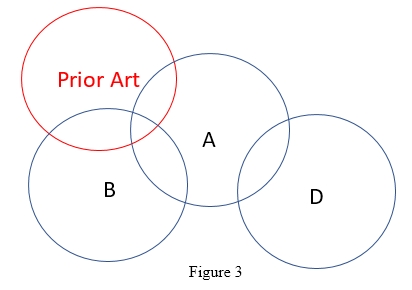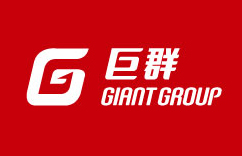【Patent】Draft Amendments to Taiwan Patent Act in 2025 – Introduction of Joint Design Applications
2025-06-27 Shang Lin LU-Patent Attorney
.jpg)
On March 21, 2025, the Taiwan Intellectual Property Office (TIPO) released the second version of the draft amendments to the Patent Act (the first version of the draft amendments was announced on September 11, 2024). Apart from the issue of the mechanism for the true patent applicants to reclaim their rights, the second version moves further along the direction of the first version of the amendments. With a primary focus on amendments to the design patent system, the draft amendments particularly emphasizes the introduction of a design joint application system. The following summarizes the key amendments of the first and second versions and highlights the potential practical issues related to joint design patent applications.
⯁ Computer-Generated Images and Graphical User Interfaces Deemed as “Articles”
According to Article 121 of the current Patent Act, “A design refers to the creation made visually by the shape, pattern, color, or any combination thereof of all or part of an article. Computer-generated images (CGIs) and graphical user interfaces (GUIs) applied to an article may also be subject to design patent applications.” Under this provision, CGIs and GUIs themselves cannot be the eligible subject matter of design patent applications; and they are regarded as temporary patterns or combinations of patterns and colors displayed via a device, and they must be “applied to an article” so as to meet the definition of a design under the Taiwan Patent Act.
In 2020, the Patent Examination Guidelines relaxed the requirement for the designs of CGIs and GUIs, in which CGIs and GUIs are not required to be applied to tangible articles. It became permissible for patent applicants to indicate that their CGI and GUI designs are applied to intangible software products, such as computer programs or apps, in conformity with the trends of developments of modern technology and industry. However, with the rise of emerging display technologies—such as projection interfaces and holograms, virtual elements (e.g., projection keyboards) can exist in real-world environments without being attached to a physical object—obviously, simply broadening the scope of protection of design patents to “computer program products” as the “articles” to which CGIs and GUIs are applied can no longer satisfy the modern trends. Accordingly, the draft amendments propose that CGIs and GUIs be considered as “articles” by legal friction. This means that CGIs and GUIs themselves can be eligible subject matters for design patent protection.
Based on current practices, CGIs and GUIs are interpreted as temporary visual creations applied to a display device or computer program product; and the “article” mentioned in the specification of a design patent application is referred to the display device or computer program product. Whether CGI or GUI itself had a specific function is not an issue. However, if CGIs and GUIs will be eligible subject matter under the amended Patent Act, they must have a specific use or function to qualify as an “article.” This aligns with the TIPS’s explanations of the draft amendment to current Article 121 of the Patent Act, which states that such CGIs and GUIs “have specific functions or purposes and are distinguishable from pictures or videos”—similar to the definition of graphical design based on Japan Design Act.
⯁ Extension of the Grace Period for Design Patents
To harmonize Taiwan’s design patent regulations with international standards, in the draft amendments, the grace period for a design patent will be extended from 6 months to 12 months. Notably, in Taiwan, it is not necessary to claim the grace period at the time of filing. Applicants may voluntarily claim the grace period before a final decision on the application is rendered. Additionally, in the case that an examiner cites the applicant’s prior publications during examination to assert the novelty or creativity of the design; in response, the applicant may present relevant evidences claiming grace period to exclude the prior publications from the prior art of the claimed design.
⯁ Introduction of Joint Application System for Multiple Similar Designs
Based on current Patent Act, there is no system for joint applications involving similar designs in one single application; and only derivative designs in multiple applications are allowed. Under Article 127 of the current Patent Act, “for two or more similar designs owned by the same person, applications may be filed for a design patent and its derivative design patent(s).”.
To reflect international trends and industrial practices—where it is common to develop multiple similar designs under a single design concept—the proposed draft amendments to the Patent Act add new rules. Paragraph III of Article 129 of the proposed amended Patent Act provides that two or more similar designs created by one person can be filed in one application by designating one of the designs as the “original design” and the others as “derivative designs.” By consolidating similar designs into one case, this so-called design joint application system simplifies the filing process for applicants, enhances design patent portfolio management, and improves examination efficiency for the patent office.
While this new system is undoubtedly beneficial, in practical, the author believes several issues still need to be clarified to ensure the smooth operations of the system. Some of the foreseeable issues follow.
- Can a Further Similar Design Be Added to a Design Joint Application after Filing?
Suppose that an applicant files a design joint application (Application A) containing two designs: Design A (original) and Design B (similar to A). After Application A has been filed, the same applicant creates a new design C, which is also similar to Design A. Can design C be added to the same joint application?
According to the TIPO’s explanations for the amendment to Article 129 of the `current Patent Act, derivative designs that are not filed simultaneously with the original design in Application A cannot be added into the application. Therefore, design C cannot be added to Application A.
According to the TIPO’s explanations for the amendment to Article 129 of the `current Patent Act, derivative designs that are not filed simultaneously with the original design in Application A cannot be added into the application. Therefore, design C cannot be added to Application A.
- Can the Original Design in a Joint Application Also Serve as the Original for Another Derivative Design Filed Separately?
Since Design C cannot be added to Application A but is similar to Design A, Design C may be filed as a derivative design of Design A in a further derivative design patent application. The draft of the amended Patent Act does not explicitly state whether a design that has been designated as the “original design” in a design joint application can also serve as the “original design” for another derivative application. The author believes that this should be allowed.
- Can a Similar Design (Non-Original) in a Design Joint Application Serve as the Original Design for Another Derivative Design?
Further to above Points 1 and 2, even though Design A may serve as the original design for a separately filed derivative design (Design C), complications may arise if Design C is similar to Design B but not to Design A. In such situation, under Article 127 of the proposed amended Patent Act—which states that “an applicant may not file a derivative design patent for a design that is not similar to the original design but is similar to another derivative design”—and according to the TIPO’s explanations for Article 129 of the amended Patent Act —“An applicant shall not file a patent application for derivative design if the derivative design is only similar to the derivative design but not to the original design in the original design patent application”—Design C would neither be included in the design joint application (Application A) nor be filed as a derivative design of Design A in another derivative application.
Under this situation, although it may be possible to overcome the issue by changing the original design to Design B in the design joint application (Application A), a problem may arise if the joint application also includes a Design D that is similar only to Design A but not to Design B. In that case, it may become necessary to divide Design D from the joint application (Application A). Otherwise, Design B could not be designated as the original design. Figure 1 below may explain the situation clearly.
Under this situation, although it may be possible to overcome the issue by changing the original design to Design B in the design joint application (Application A), a problem may arise if the joint application also includes a Design D that is similar only to Design A but not to Design B. In that case, it may become necessary to divide Design D from the joint application (Application A). Otherwise, Design B could not be designated as the original design. Figure 1 below may explain the situation clearly.

In Figure 1 above, Designs A, B and D represented by blue circles are filed in the same design joint application (Application A), in which Design A is designated as the original design. The overlapping portions of the circles indicate similarities among the designs. As shown in Figure 1, both Design B and Design D are similar to Design A, while Design C is only similar to Design B. Therefore, if the applicant wants to file Design C after the design joint application (Application A) has been filed, the rule stating that “a derivative design not filed concurrently with the original design may not be subsequently included in the design joint application” would prevent Design C from being added to Application A. Furthermore, since Design C is only similar to Design B but not to Design A, Design C cannot be filed as the derivative design of Design A.
If, in response, the applicant amends the joint application (Application A) by designating Design B as the original design—so that Design C can be filed as the derivative design of Design B—this would result in a new issue: Design D, which is not similar to Design B, would no longer qualify to be kept in the same joint application (Application A).
Therefore, the author suggests that it is necessary to clarify whether a derivative design (not the original design) in a design joint application may serve as the original design for a derivative design in another application. If not, Design D shown in Figure 1 would need to be divided from the joint application (Application A) and filed as an independent design in another application. This, in turn, raises another issue—whether a design divided from a joint application may be added back into another design joint application. This will be discussed below.
If, in response, the applicant amends the joint application (Application A) by designating Design B as the original design—so that Design C can be filed as the derivative design of Design B—this would result in a new issue: Design D, which is not similar to Design B, would no longer qualify to be kept in the same joint application (Application A).
Therefore, the author suggests that it is necessary to clarify whether a derivative design (not the original design) in a design joint application may serve as the original design for a derivative design in another application. If not, Design D shown in Figure 1 would need to be divided from the joint application (Application A) and filed as an independent design in another application. This, in turn, raises another issue—whether a design divided from a joint application may be added back into another design joint application. This will be discussed below.
- Can a Design That Has Been Divided from a Joint Application Be Added Back?

During subsequently examination, the examiner identified another prior art (represented by the red circle) to reject Designs A and B, as the scope of disclosure of the prior art overlaps with those of both Designs A and B, but not with Design D, as illustrated in Figure 3 below.

In response to the examiner’s rejection, to facilitate the granting of Design D, the applicant choses to divide Design D from the joint application (Application B), and only Designs A and B are kept in the application. The applicant also argued that the prior art is not similar to either Design A or Design B.
At this point, since the applicant worries that Designs A and B may be rejected, Design D is strategically divided and pursued independently in another application. However, if the applicant overcomes the examiner’s rejection in view of the cited prior art, the author believes that the applicant should be permitted to incorporate Design D into the original joint application (Application B); alternatively, Design D may be filed as a derivative design of Design A. Otherwise, due to Design D is similar to Design A, Design D may not be allowed as an independent design. Therefore, the author believes it is necessary to further clarify whether a design that has been divided from a joint application may be added back to the original joint application at a later stage.
⯁ Extension of the Timing for Requesting Divisions for Design Patent Applications
Under current Patent Act, requests for divisions of invention and utility model patent applications can be filed within 3 months after an approval decision of the original application is served. However, divisional applications for design patent applications must be filed when the original application is pending at the TIPO. Applicants of design patent applications have very limited time to decide whether or not to file divisional applications. Moreover, short periods of time for the examinations of design patent applications put more restriction on the applicants’ filing strategies. If design joint system is introduced, applicants will need more flexibility.
In the proposed amendment, the provisions of Article 130 of the amended Taiwan Patent Ac relax the timing for requesting divisions for design patent applications; thereby resolving the foregoing issues by allowing applicants to divide design patent applications within 3 months after decisions of allowance are served, similar to the rules for invention and utility model applications.
These amendments significantly improve the design patent system. The introduction of joint design system for similar designs filed in one application may practically lead to complex issues, as outlined above (and potentially more). These issues will require further clarification by the TIPO. Giant Group will continue to monitor and update the legislative progress accordingly.
消息來源:
